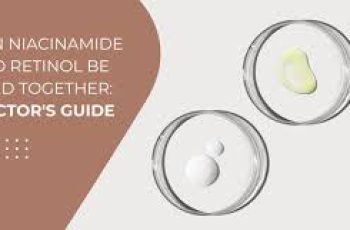
Can You Use Too Much Salicylic Acid?
Salicylic acid has long been a favorite in the skincare world. Known for its ability to clear breakouts, this BHA (beta hydroxy acid) is a go-to for treating acne, blackheads, and oily skin.
It works deep within pores, dissolving oil, debris, and dead skin that can clog follicles and lead to blemishes. It’s no surprise this ingredient is adored by dermatologists and beauty enthusiasts alike.
However, with great power comes great responsibility. Using too much salicylic acid—or applying it incorrectly—can cause more harm than good.
In this post, we’ll dive into everything you need to know about using salicylic acid, how it benefits the skin, and how to spot the signs that you may be overdoing it.
What Are the Benefits of Salicylic Acid for the Skin?
Salicylic acid offers multiple benefits, especially for those dealing with acne or oily skin. Here are some of the top ways it supports a clear, balanced complexion.
1. Exfoliates Dead Skin Cells
Salicylic acid breaks down the bonds between dead skin cells, helping them shed more easily. This reveals brighter, fresher skin and prevents clogged pores.
2. Penetrates Deep into Pores
Its oil-soluble nature allows salicylic acid to get deep into the skin, cleaning out pores from the inside. This is why it’s so effective at treating acne-prone skin.
3. Regulates Oil Production
Salicylic acid helps to reduce and balance excess sebum production, making it ideal for oily skin types.
4. Reduces Inflammation and Redness
Its anti-inflammatory properties help calm red, swollen pimples. It soothes irritation and reduces the appearance of angry breakouts.
5. Treats and Prevents Breakouts
By unclogging pores and fighting bacteria, salicylic acid helps clear existing blemishes and prevent new ones from forming.
6. Breaks Down Surface Buildup
It dissolves keratin—the protein that can lead to a rough texture and clogged pores—resulting in smoother, more even skin.
Is It Safe to Use Salicylic Acid Every Day?
You can use salicylic acid daily, but only if your skin can tolerate it. For some skin types, using it too frequently may lead to dryness, flakiness, or irritation.
Since salicylic acid penetrates deep into pores, it’s highly effective. But if your skin is dry or sensitive, it may react negatively to daily application.
Using salicylic acid too often can strip your skin of essential moisture and oils. This weakens the skin barrier and may actually cause more breakouts.
Dry, sensitive, or reactive skin types should use it 2–3 times a week instead. Start slow and monitor how your skin reacts before increasing usage.
Signs You’re Using Too Much Salicylic Acid
Overusing any active ingredient can disrupt your skin’s balance. Salicylic acid is no exception. Here are common signs you might be using too much.
1. Dryness or Tightness
If your skin feels dry, tight, or uncomfortable, you might be overdoing it. This is especially true for those with naturally dry skin types.
Tight skin can feel itchy or stretchy, and sometimes you’ll catch yourself making odd facial expressions just to ease the tension.
2. Redness and Irritation
One of the earliest signs of overexposure to acids is redness. This can appear as flushed cheeks, flaking, or even painful patches on your face.
If your skin becomes sensitive to touch or feels itchy or hot, stop using salicylic acid and give your skin time to heal.
3. Flaky or Peeling Skin
Excess exfoliation can lead to flaking, peeling, and compromised skin. If your skin starts shedding or looks patchy, reduce how often you’re using the acid.
Over time, continual peeling can weaken the skin barrier, leaving your skin vulnerable to damage, bacteria, and environmental stress.
4. Breakouts or Acne Flare-Ups
Ironically, too much salicylic acid can cause more breakouts. When your skin is stripped of its oils, it may start overproducing sebum to compensate.
This oil buildup can clog pores and lead to more blackheads, whiteheads, and painful pimples—exactly what you’re trying to avoid.
Can Too Much Salicylic Acid Cause Acne?
Yes, it can. There are two key reasons salicylic acid may cause breakouts, especially when overused or improperly applied.
Reason 1: Skin Purging
When you start using salicylic acid, it speeds up skin cell turnover and clears debris from deep inside the pores. This may cause a process called purging.
Purging pushes blockages to the surface, and this often looks like a sudden acne flare-up. It’s temporary and usually resolves in 4 to 6 weeks.
Reason 2: Barrier Damage and Rebound Oiliness
If you use too much or choose a formula that’s too strong, your skin may become dry and irritated. This weakens your skin barrier.
Once your barrier is compromised, it triggers oil production as a protective measure. The result? More clogged pores and more breakouts.
Who Should Use Salicylic Acid?
Salicylic acid is ideal for those with:
Oily skin, Acne-prone skin. Blackheads or whiteheads, Enlarged pores
However, people with dry, sensitive, or eczema-prone skin should use caution. Lighter exfoliants like lactic acid or PHAs may be better options.
How to Use Salicylic Acid the Right Way
To avoid irritation, follow these tips when incorporating salicylic acid into your skincare routine.
1. Start Slowly
Begin with 2–3 applications per week. Gradually increase as your skin builds tolerance. If dryness or irritation appears, pull back.
2. Choose the Right Concentration
Most over-the-counter salicylic acid products contain 0.5% to 2%. Start with lower concentrations before moving up to stronger formulas.
3. Avoid Mixing with Other Harsh Actives
Don’t combine salicylic acid with retinol, benzoyl peroxide, or AHAs unless directed by a professional. The mix may be too harsh for your skin.
4. Hydrate and Moisturize
Always follow salicylic acid with a hydrating serum and a good moisturizer. This keeps your skin barrier intact and prevents dryness.
5. Use Sunscreen Daily
Exfoliating acids can make your skin more sensitive to UV rays. Apply sunscreen every morning to protect your skin and prevent sun damage.
What If I’ve Already Damaged My Skin?
If you suspect you’ve used too much salicylic acid, take these steps to support recovery.
1. Stop Using Exfoliants
Give your skin a break from salicylic acid and other active ingredients. Let your skin recover before reintroducing anything new.
2. Focus on Repair
Use gentle, fragrance-free cleansers and barrier-repair creams. Look for ingredients like ceramides, hyaluronic acid, and niacinamide.
3. Rehydrate the Skin
Apply hydrating serums or facial oils to bring moisture back into the skin. Drink plenty of water, and don’t forget internal hydration.
4. Don’t Pick at Flaky Areas
Avoid picking, peeling, or scrubbing at flaky or irritated skin. Doing so can lead to scarring or worsen irritation.
5. Consult a Dermatologist
If symptoms persist or worsen, seek advice from a professional. A dermatologist can help customize a routine that works for your skin type.
Alternatives to Salicylic Acid
If you’ve found salicylic acid to be too harsh, you can try gentler options that still exfoliate and clarify your skin.
Lactic Acid
Lactic acid is an AHA that exfoliates the top layer of skin while also attracting moisture. It’s great for dry or sensitive skin types.
Polyhydroxy Acids (PHAs)
PHAs offer mild exfoliation and are less likely to irritate. They also hydrate the skin while improving texture over time.
Niacinamide
While not an exfoliant, niacinamide helps regulate oil production, reduce redness, and strengthen the skin barrier—making it a great pair with salicylic acid when used wisely.
Final Thoughts
Salicylic acid can be a skincare superstar when used properly. It clears pores, fights acne, and refines skin—but overuse can lead to dryness, breakouts, and barrier damage.
The key is to listen to your skin. Start slow, observe your skin’s reaction, and adjust your routine accordingly. Don’t fall into the “more is better” mindset—it rarely works in skincare.
If you notice dryness, redness, irritation, or more breakouts, take a step back and rethink your usage. Always patch test new products and introduce changes gradually.
And when in doubt, consult a dermatologist. They can help you build a personalized routine that maximizes results without harming your skin.
Have more questions about salicylic acid or skincare in general? Come chat with us on Instagram—we’d love to hear from you and help you feel confident in your skincare journey!


